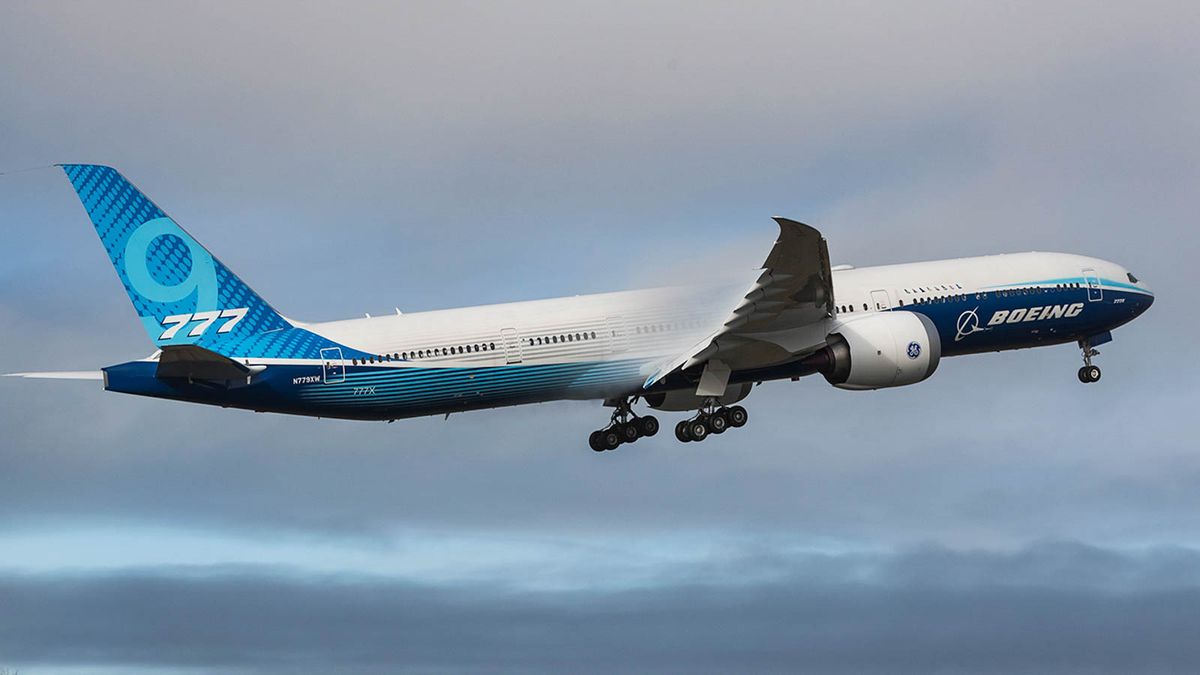Boeing’s huge 777-9 airplane takes its first flight towards FAA certification

A few minutes every morning is all you need.
Stay up to date on the world's Headlines and Human Stories. It's fun, it's factual, it's fluff-free.
The world’s largest plane and longest twin-engine airliner successfully completed a test run on January 25. The plane flew for a total of three hours and 51 minutes, taking off at 10:09 a.m. in Everett, Washington, where Boeing’s manufacturing facility is located.
“Congratulations to our customers and #777X team on today’s safe and successful flight, the first of many for the 777X as we continue our rigorous test program,” Boeing tweeted on January 26.
The largest and most fuel efficient twin-engine commercial jet ever made
“Based on the most successful twin-aisle airplane ever, the Boeing 777, and with advanced technologies from the Boeing 787 Dreamliner, the 777X will be the largest and most fuel efficient twin-engine jet in the world, with an exceptional passenger experience,” Boeing said in a statement.
Boeing’s 777X line consists of two models, the 777-8 and the 777-9. Both lines will consume 10 percent less fuel than the competition, resulting in lower emissions as well as 10 percent lower operating costs.
The efficient fuel consumption is attained through advanced aerodynamics and a carbon-fiber composite wing, together with the use of the world’s largest engine, the General Electric (GE) Aviation’s GE9X.
The 777X line is built to compete with the Airbus A350-1000.
Boeing’s 777X versus the Airbus 350-1000
Built and released years before the Boeing 777X series, the Airbus A350 has been a popular plane and is used by most airlines.
However, in terms of size and efficiency, the Boeing 777X is reported to have increased seating capacity. The 777-9 model has the ability to seat up to 100 passengers more than the Airbus A350.
At 20 feet 4 inches (6.20 meters), the Boeing 777-9’s fuselage is also much larger than its competitors.
[article_ad]
Passenger experience improvement on the Boeing 777X
The 777X will introduce a number of passenger experience improvements, including larger windows.
The windows on the existing Boeing 777 are 140 square inches (0.09 square meters) and the windows on the Airbus A350 are 125 square inches (0.08 square meters). The windows on the 777X series, by comparison, are 162 square inches (0.10 square meters).
According to Boeing, passengers will be able to enjoy a “wide, spacious cabin, large overhead bins that close easily for convenient access to their belongings, larger windows for a view from every seat, better cabin altitude and humidity, less noise and a smoother ride."
777X wide-body family
The 777-9, the newest member of Boeing’s wide-body family of two which has a seat count of 426, is significantly larger than the 777-8 model, which has a seat count of 384.
The 777-9 model also has an extended wingspan of 235 feet, 5 inches (71.755 meters) and 212 feet, 8 inches (64.8 meters) in on-ground wingspan. The 777-9 is also 251 feet, 9 inches (76.7 meters) long, which is considerably longer than the 777-8 which is 229 feet (69.8 meters).
[article_ad]
Expected to start service in 2021
Already, 340 orders and commitments to order have been placed by leading carriers around the world, including ANA, British Airways, Cathay Pacific Airways, Emirates, Etihad Airways, Lufthansa, Qatar Airways and Singapore Airlines. Since its launch in 2013, the 777X family has outsold the competition nearly 2 to 1.
Boeing expects to deliver the first 777X in 2021.
First flight for Boeing 777X delayed due to engine issue
In March 2019, the very first Boeing 777X was presented to company employees inside Boeing’s main wide-body manufacturing facility in Everett, Washington. However, due to the crash of the Boeing 737 Max 8 in Ethiopia in April of 2019, the new 777X was launched with no press featured at the event.
The first flight was scheduled to take place on January 23 but was pushed to January 24 due to bad weather.
“We are postponing the #777X first flight that was scheduled to take place tomorrow, January 23, due to weather. The team is currently assessing the possibility of flying on January 24. Stay tuned for updates,” Boeing announced after aborting its first test run.
The rescheduled flight was also canceled due to weather.
Long road to certification
Uncertainties in the wake of deadly crashes that resulted in the worldwide grounding of Boeing’s 737MAX series will likely present an added challenge to the certification of Boeing’s 777X planes.
Still, the company seems optimistic about being certified by the FAA in time to deliver the jet to major airlines.
“This major milestone for the #777X airplane program begins the next critical phase of testing as we work towards certification and then delivery to customers in 2021,” the aviation company tweeted.
[article_ad]




Comments ()